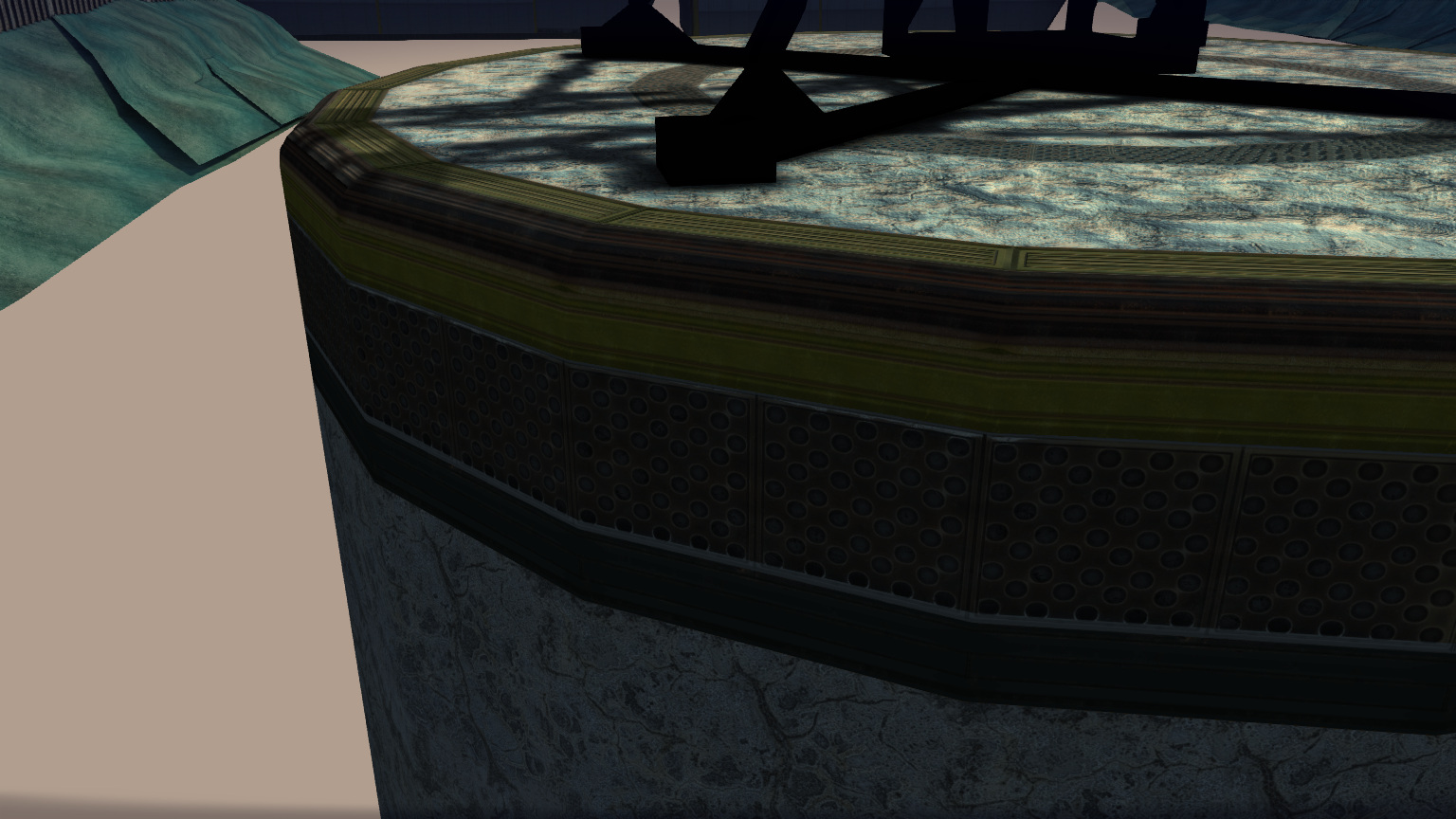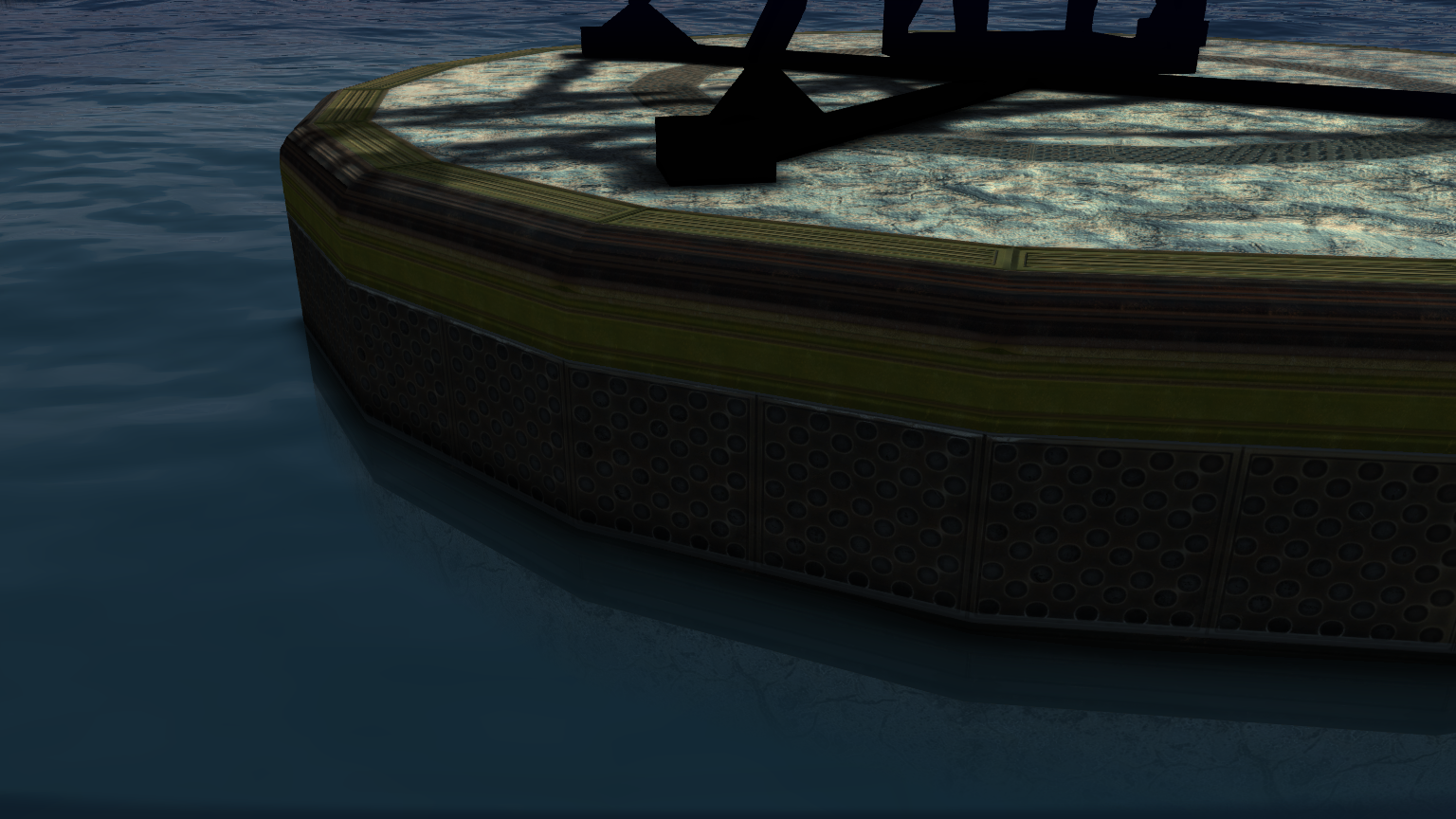Blending against deep water
Below I’m going to talk about a cheap technique for blending objects against ‘deep’ water. If you’ve never had to do this, then you might wonder what the problem is – you just render the water with alpha blending on right? Well, no, because if you have an intersecting object it should ‘fade out’ the deeper into the water it is, to simulate less light bouncing out out from under the water surface. A regular alpha blend would give you a uniform alpha level under the surface which would look strange.
So a technique you can use with both deferred and forward rendering, is to render your water as the very last thing in your opaque section, and use the stencil buffer to identify water pixels and non-water pixels. In the example below I’m using 1 (essentially black) to tag water pixels (which have animated vertex waves so it’s not just a flat plane) and 32 to identify my non-water meshes. You then re-render your intersecting meshes with alpha-blend on, and the stencil buffer set to reject any pixels that do not equal the water (value 1). The shaders for this pass are modified to compute alpha based on the world space height, so the deeper below the water the pixel is the lower the alpha blend value.
float ComputeWaterStencilAlpha(float _y)
{
return 1.0 - saturate((g_waterStencilParams.x - _y) * g_waterStencilParams.y);
}
I use a few tweakables as above so the alpha fall-off can be easily tweaked. It can also look nice to apply a different fog set to the intersecting meshes, to tint the underwater objects a darker blue. Although you pay the vertex cost for the second pass on these intersecting meshes you only pay the pixel cost for the pixels actually under the water as the stencil buffer rejects everything else. If you want to gain some visual quality at some more cost, the instead of rendering the intersecting meshes to the framebuffer, render to an offscreen buffer (with destination alpha) and then you can composite that render target to the framebuffer, again using the stencil buffer as a mask. With that method you can easily add caustics and fake refractions into the compositing shader.




Recent Comments